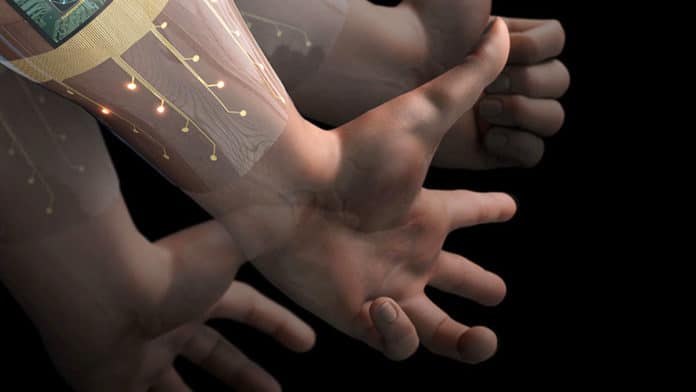Engineers at the University of California, Berkeley, have created a new device that combines wearable biosensors with artificial intelligence software to help recognize what hand gesture a person intends to make based on electrical signal patterns in the forearm. The device paves the way for better prosthetic control and seamless interaction with electronic devices such as computers.
A team of researchers developed a computer chip-equipped thin-film flexible biosensor armband that can read the electrical signals at 64 different points on the forearm. The electrical signals in the forearm are then fed into a chip programmed with an AI algorithm that translates them into corresponding movements of the hand and arm.
When the user makes a corresponding action, the system can determine which one it is by matching its distinct nerve signal pattern. The demonstration at this stage has been able to support 21 different gestures, including a thumbs-up, a fist, a flat hand, holding up individual fingers, and counting numbers.
The algorithm has to first “learn” how electrical signals in the arm correspond with individual hand gestures. To do this, each user has to wear the cuff while making the hand gestures one by one. However, the biosensor armband uses a type of advanced AI called a hyperdimensional computing algorithm, which is capable of updating itself with new information.
Besides, no personal data are transmitted to a nearby computer or device to protect the privacy of users. Not only does this speed up the computing time, but it also ensures that personal biological data remain private.
“Prosthetics are one important application of this technology, but besides that, it also offers a very intuitive way of communicating with computers,” said Ali Moin, who helped design the device as a doctoral student in UC Berkeley’s Department of Electrical Engineering and Computer Sciences. “Reading hand gestures is one way of improving human-computer interaction. And, while there are other ways of doing that, by, for instance, using cameras and computer vision, this is a good solution that also maintains an individual’s privacy.”
While the device is not ready to be a commercial product yet, it could likely get there with a few tweaks, said Jan Rabaey, senior author of the paper published in the journal Nature Electronics.
